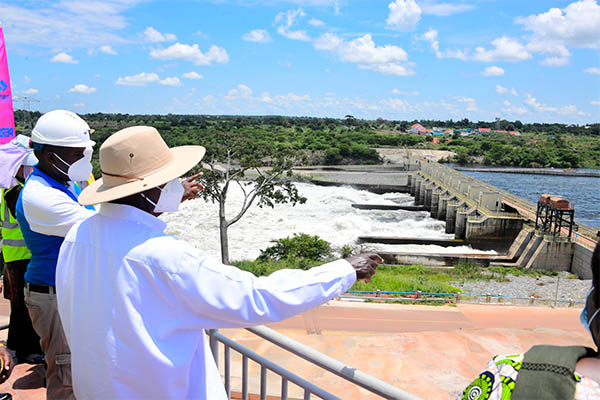
Karuma, Uganda | THE INDEPENDENT | The 600 MW Karuma Hydropower Plant, has been commissioned. President Yoweri Museveni presided over the commissioning ceremony on Thursday.
The plant is seen as a strategic infrastructure project that will empower communities, bolster the economy, and help Uganda achieve universal access to electricity by 2030.
The plant, located in Karuma Town Council, Kiryandongo District, features a 284-kilometre transmission line to Kawanda in Kampala, a 55-kilometre line to Olwiyo in Nwoya, and a 75-kilometre line to Lira City, ensuring power distribution to key load centres nationwide.
“Karuma represents a major milestone in our national energy strategy. It will significantly boost our power generation capacity, enhance energy security, and support sustainable development,” said Dr Ruth Nankabirwa Ssentamu, the Minister of Energy and Mineral Development.
Hydropower remains Uganda’s leading source of energy, with a total potential of over 4,100 MW. The addition of Karuma’s 600 MW increases Uganda’s generation capacity to 2,045.5 MW, far exceeding the current peak demand of between 900 MW and 1,000 MW.
“Peak demand has surged from 257 MW in 2004 to 988 MW in 2024, driven by economic growth and expanded electrification. Access to electricity has also grown significantly, from 5% in 2004 to 57% in 2023, a significant achievement in our rural electrification efforts,” noted Eng. Irene Pauline Bateebe.
Bateebe highlighted Uganda’s target of generating 52,000 MW by 2040 and the goal of achieving Sustainable Development Goal (SDG) 7—universal access to affordable, reliable, sustainable, and modern energy. She emphasized that projects like Karuma bring Uganda closer to realizing these targets.
Joseph Oryem Lilly, the LC1 Chairperson of Karuma Central Ward, lauded the project for transforming the lives of the local population and attracting development to the area. He noted that the influx of new residents has boosted sectors like hospitality, creating jobs and improving livelihoods.
However, Oryem expressed disappointment over the lack of compensation for 125 landowners who contributed land to the project 13 years ago. He urged the government to ensure these landowners are fairly compensated and that roads are built to connect local households to the power grid.
Edith Aliguma Adyeri, Kiryandongo District Chairperson, noted that land for resettling affected families in neighbouring Nwoya District has already been acquired, but the process stalled due to insufficient funds.
The Karuma hydropower project displaced 3,735 people, including 280 landowners and 134 tenants. Since the groundbreaking in 2013, Karuma Town Council has seen its population rise from 5,000 to over 20,000.
President Museveni traced Uganda’s hydropower journey back to the inauguration of the Owen Falls Dam in 1954, which laid the foundation for the country’s energy sector.
He says that subsequent projects like the 200 MW Kiira Hydropower Station (2003) and the 183.2 MW Isimba Hydropower Project (2019) have further boosted Uganda’s generation capacity.
“The Karuma Hydropower Project is the latest and most ambitious step in our ongoing energy evolution,” Museveni said.
In 2011, the Ugandan government secured $1.4 billion (UGX 5.192 trillion) in funding from the Exim Bank of China, contributing an additional $353 million (UGX 1.309 trillion) in counterpart funding. The Karuma project, executed over 12 years by China’s Sinohydro Corporation Ltd., cost a total of $1.688 billion (UGX 6.261 trillion).
As of July 2024, Uganda’s total grid length stands at 4,496.4 km, with 42 substations and a transformation capacity of 6,945.5 MVA. Karuma is now the country’s largest power installation and Africa’s largest underground power plant.
It serves as a cornerstone of Uganda’s broader development agenda under the National Development Plan III, which sees energy as a key driver in transforming Uganda from a peasant economy to a prosperous nation by 2050.
*****
URN
 The Independent Uganda: You get the Truth we Pay the Price
The Independent Uganda: You get the Truth we Pay the Price



